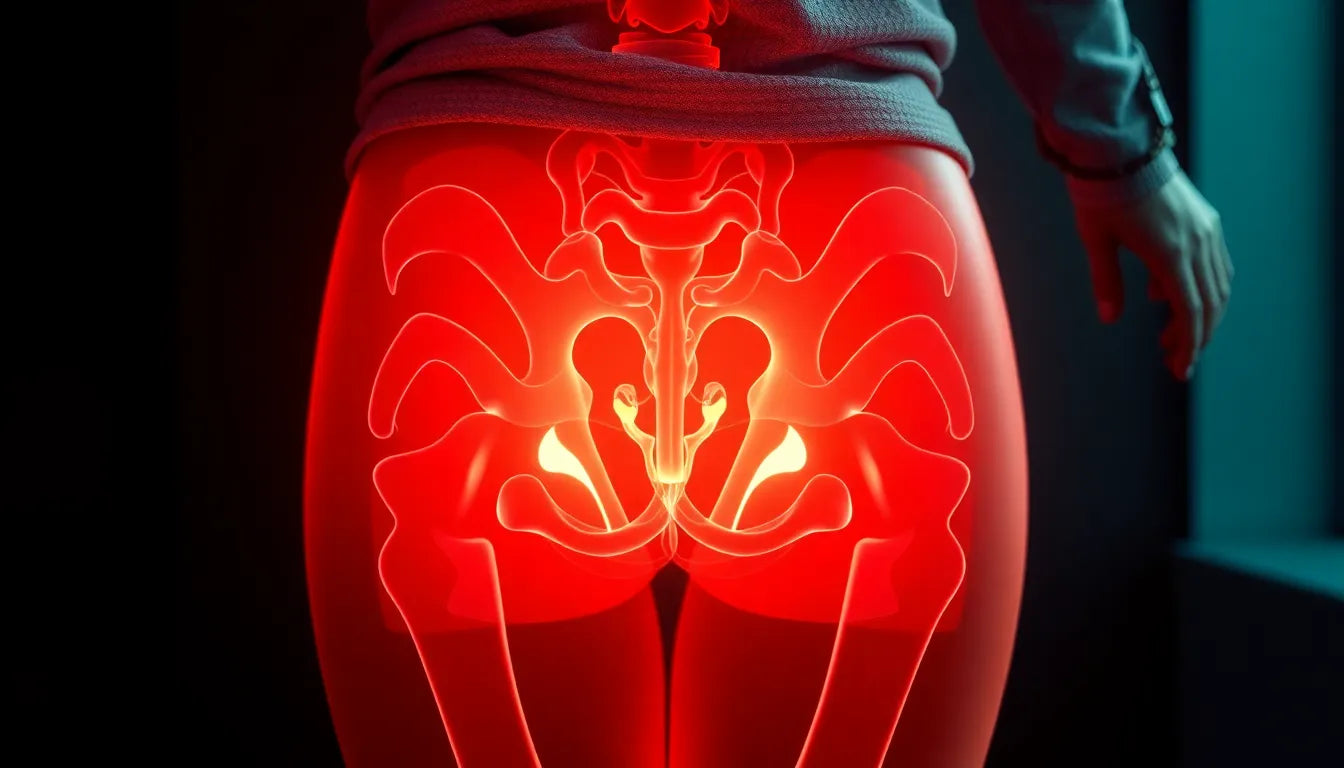Neck pain, or "ondt i nakken" as it's known in Danish, is a common ailment that affects a significant portion of the population at some point in their lives. It's not just the inconvenience of a stiff neck that bothers people; the complexity of neck pain lies in its ability to manifest in various ways and originate from multiple causes. Whether it's a dull ache from poor posture or sharp pain following an injury, neck discomfort can disrupt daily activities and quality of life.
The intricacies of neck pain make it a topic worth exploring. For many, the root causes remain hidden beneath layers of muscle tension, stress, and lifestyle habits. Understanding these underlying issues is crucial for effective management and prevention. In this blog post, we will delve into the common and hidden causes of neck pain, identify symptoms that warrant attention, and discuss practical ways to find relief. By gaining a deeper understanding of neck pain, you can take proactive steps to manage and potentially prevent it.
Understanding the prevalence and complexity of neck pain
Neck pain can be as simple as a temporary discomfort or as complex as a chronic condition requiring ongoing management. Various factors contribute to its prevalence, including our modern lifestyle, which often involves prolonged periods of sitting and the use of electronic devices. This has led to an increase in cases of "tech neck," a term used to describe the strain caused by looking down at screens for extended periods.
However, the causes of neck pain extend beyond posture and technology. Emotional stress is another significant contributor, often leading to muscle tension and tightness in the neck area. Additionally, injuries from accidents or sports, as well as degenerative conditions like osteoarthritis, can lead to persistent neck pain. Understanding these diverse causes is the first step towards effective management and relief.
What to expect from this post
This post aims to provide a comprehensive overview of neck pain, focusing on both common and less obvious causes. We will explore the symptoms that accompany neck pain and discuss when it might be necessary to seek professional help. Furthermore, we will cover effective treatment options, ranging from physical therapies to simple lifestyle adjustments that can alleviate discomfort and improve neck health.
By the end of this post, you will have a clearer understanding of the multifaceted nature of neck pain and be equipped with the knowledge to take control of your neck health. Whether you're dealing with occasional stiffness or chronic pain, the insights provided here will help you find the relief you need and prevent future occurrences.
common causes of neck pain
Neck pain, or "ondt i nakken," is often attributed to a variety of common causes, each contributing to discomfort in unique ways. Understanding these can aid in identifying the root of the problem and finding appropriate solutions.
muscle tension and strain
Poor posture is a significant factor, especially in work environments where individuals spend extended periods sitting at desks or using computers. This can lead to muscle tension in the neck and shoulders, often resulting in pain and stiffness. Stress is another major contributor, as it frequently causes muscle tightness, particularly in the neck area, exacerbating discomfort.

Men's Posture Shirt™ - White
Supports muscle activation and postural awareness to help relieve neck, shoulder, and back pain.
injuries and overuse
Accidents, such as car crashes or falls, can cause acute neck pain due to sudden trauma. Sports-related injuries are also common, particularly in activities that involve high impact or twisting motions. Additionally, repetitive movements or overuse of the neck muscles can lead to chronic issues, as these actions place continuous strain on the neck, leading to persistent pain.
degeneration and health conditions
Certain health conditions can also be culprits in causing neck pain. Osteoarthritis, a degenerative joint disease, can lead to the deterioration of cartilage in the neck, causing pain and stiffness. Herniated discs, where the soft material inside a spinal disc pushes out, can press on nerves and lead to discomfort. Furthermore, conditions like fibromyalgia, which affects muscle and soft tissue, can manifest as neck pain among other symptoms.
symptoms and when to seek help
Recognizing the symptoms of neck pain is crucial in determining when professional help is necessary. While some symptoms can be managed at home, others may require medical intervention.
typical symptoms
Common symptoms include pain and stiffness in the neck, reduced mobility, and pain that radiates to the head, shoulders, or arms. These symptoms are often manageable with self-care techniques and lifestyle adjustments.
serious symptoms
However, certain symptoms warrant immediate medical attention. These include tingling or numbness in the arms, severe pain that does not improve with rest, or difficulty swallowing. Such symptoms may indicate a more serious underlying condition that requires prompt evaluation by a healthcare professional.
visual aid
A helpful tool for understanding when to seek help is a table summarizing symptoms and recommended actions. For example, mild pain and stiffness might be managed with home remedies, while persistent or severe symptoms should prompt a visit to a doctor.
effective treatments and relief
Finding relief from neck pain often involves a combination of treatments tailored to the individual's specific condition and lifestyle. Here are some effective approaches:
physical and manual therapies
Physiotherapy, chiropractic care, and massage are popular treatments for managing neck pain. These therapies focus on improving mobility, reducing pain, and addressing underlying issues through targeted exercises and manual manipulation. They are often effective in alleviating discomfort and preventing future episodes.

Women's Posture Shirt™ - Black
Patented shirt with Neuroband™ tech to help alleviate pain and activate muscles for better posture.
home remedies and lifestyle changes
Simple exercises and stretches that can be performed at home are beneficial in managing neck pain. These activities help strengthen the neck muscles and improve flexibility. Additionally, lifestyle changes such as ergonomic adjustments at the workplace and stress management techniques can significantly reduce the occurrence of neck pain.
medical interventions
In some cases, medications such as pain relievers or anti-inflammatory drugs may be necessary to manage severe pain. For more persistent or severe cases, advanced treatments like injections or surgery might be considered, though these are typically reserved for when other treatments have not provided sufficient relief.
By understanding the common causes and symptoms of neck pain, individuals can take informed steps to manage their condition effectively. Whether through lifestyle changes, therapeutic interventions, or medical treatments, there are various options available to find relief from neck pain and improve overall quality of life.
preventive measures for neck pain
Preventing neck pain, or "ondt i nakken," is often more effective than treating it after it occurs. By adopting a proactive approach, you can significantly reduce the risk of developing neck discomfort. Here are some key preventive measures:
ergonomics and posture
Maintaining proper posture is crucial, particularly in work settings where individuals spend long hours at desks. Ergonomic tools and setups, such as adjustable chairs and monitor stands, can help ensure that your workstation promotes a healthy posture. Keeping your computer screen at eye level and taking regular breaks to stretch can prevent muscle strain and tension in the neck.
regular exercise and awareness
Engaging in regular physical activity strengthens neck muscles and enhances flexibility, reducing the likelihood of pain. Incorporating exercises that focus on the neck and shoulders into your routine can be particularly beneficial. Additionally, being mindful of your body's signals and avoiding overexertion can prevent injuries and chronic conditions. Listening to your body and taking action at the first signs of discomfort can help you manage potential issues before they escalate.
frequently asked questions
why do I get neck pain?
Neck pain can result from a variety of triggers, including poor posture, stress, injuries, and degenerative health conditions. Identifying these underlying causes is essential in addressing the pain effectively. For instance, prolonged periods of sitting with improper posture can lead to muscle tension, while stress can cause muscle tightness. Understanding these triggers can help in implementing appropriate preventive measures.
what exercises help relieve neck pain?
Several exercises and stretches can alleviate neck pain and improve flexibility. Gentle neck stretches, such as tilting your head from side to side and forward and backward, can help reduce tension. Shoulder shrugs and rotations also promote relaxation of the neck muscles. Incorporating these exercises into your daily routine can provide relief and prevent future discomfort.
can neck pain cause headaches or dizziness?
Yes, neck pain can sometimes lead to headaches or dizziness. This is often due to tension in the neck muscles, which can radiate to the head and cause discomfort. Additionally, neck issues may affect the nerves or blood flow, contributing to symptoms like dizziness. If you experience these symptoms, it's important to address the underlying neck pain to alleviate them.
when should I see a doctor for neck pain?
You should consult a doctor if your neck pain is severe, persistent, or accompanied by symptoms such as tingling, numbness, or difficulty swallowing. These can be signs of a more serious condition that requires professional evaluation. Early intervention can prevent further complications and help you find effective treatment options.
By understanding the causes and preventive measures for neck pain, you can take control of your neck health and reduce the impact of this common issue on your daily life. Whether through ergonomic adjustments, regular exercise, or timely medical consultation, there are numerous strategies available to maintain a healthy and pain-free neck.
Kilder
- Nordsjælland Sportsfysioterapi. "Ondt i Nakken."
- FysioDanmark. "Nerve i Klemme i Nakken."
- Fysioterapi Østerbro. "Nakkesmerter."
- ProTreatment. "Hold i Nakken: Symptomer, Behandling og Prognose."
- Gigtforeningen. "Hvor Har Du Ondt: Nakke."
- Sundhed.dk. "Nakkesmerter."
- Sundhed.dk. "Nakken, Muskelsmerter."


















